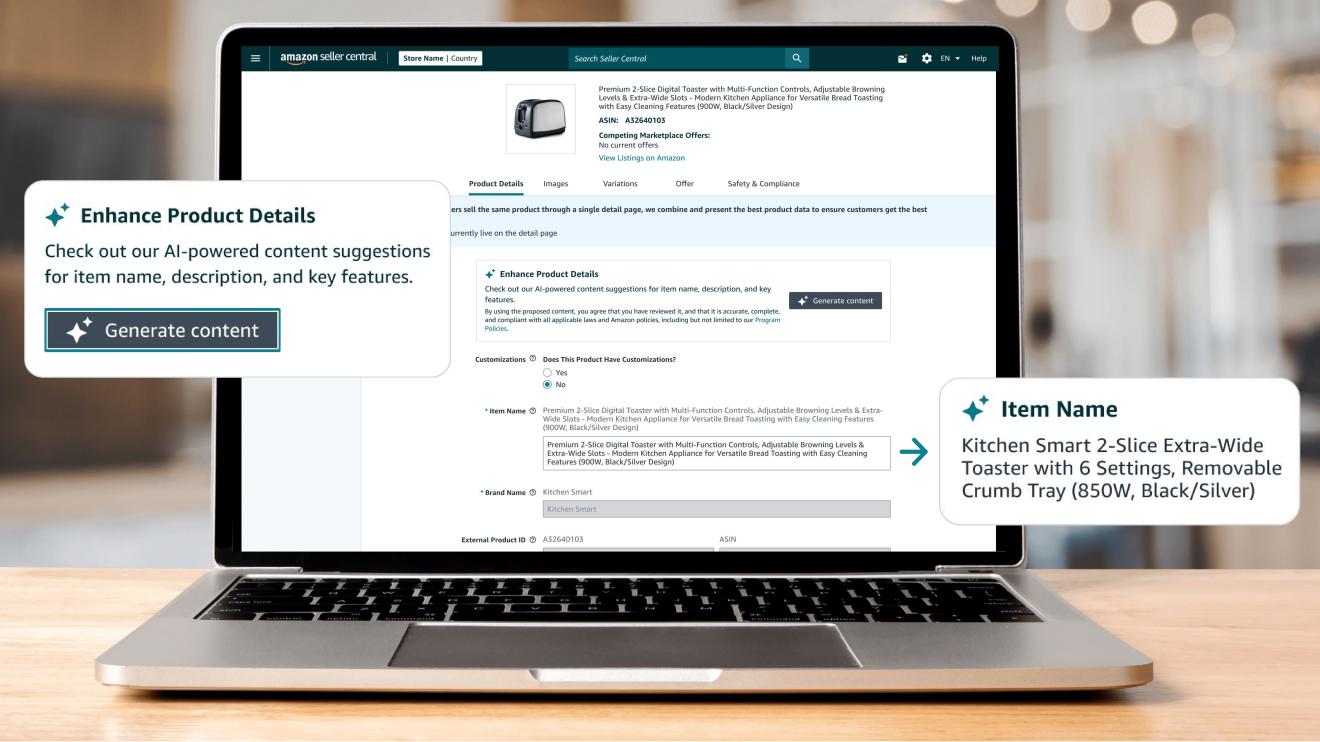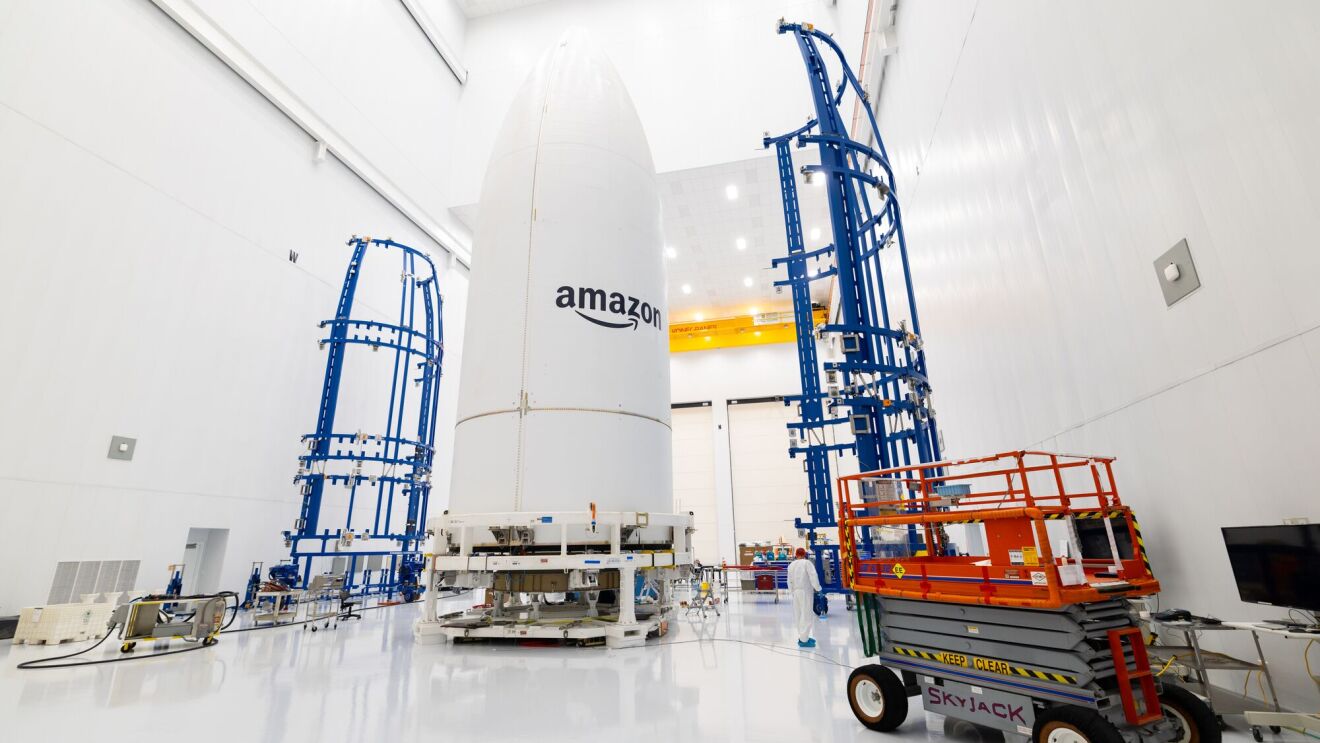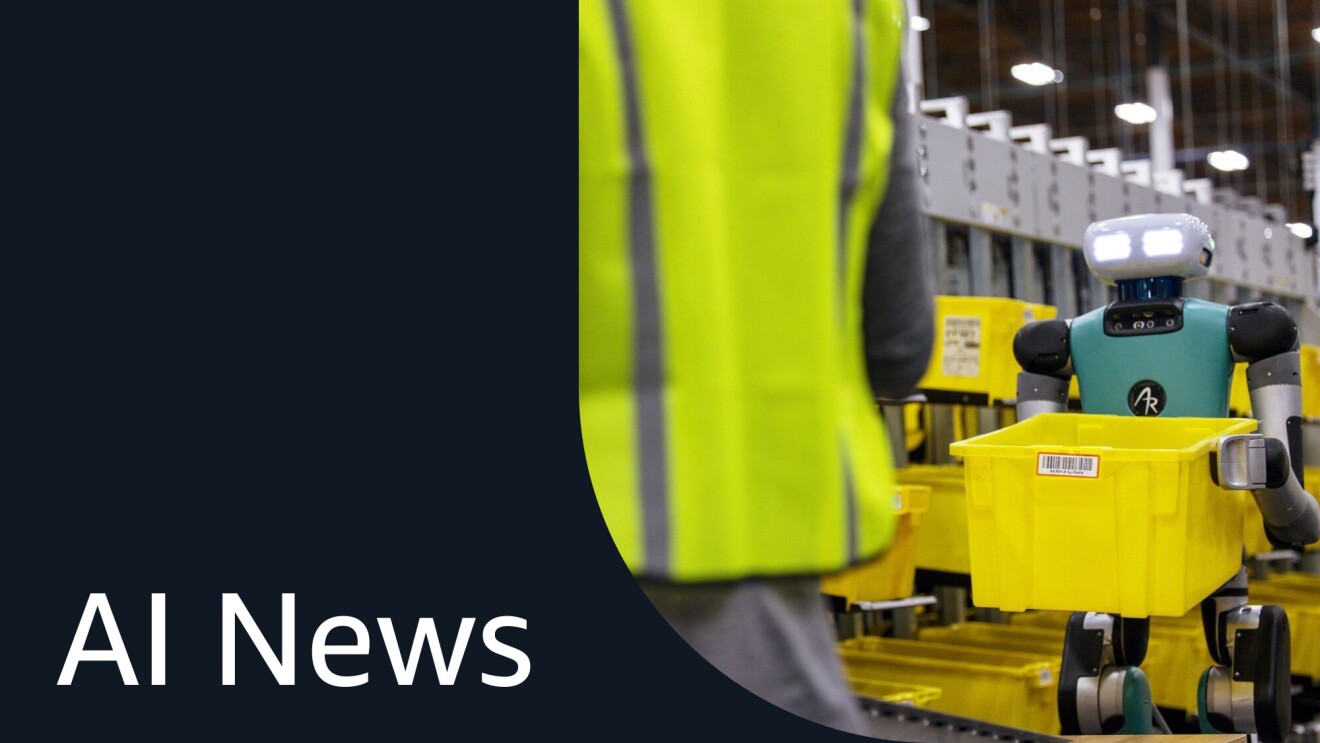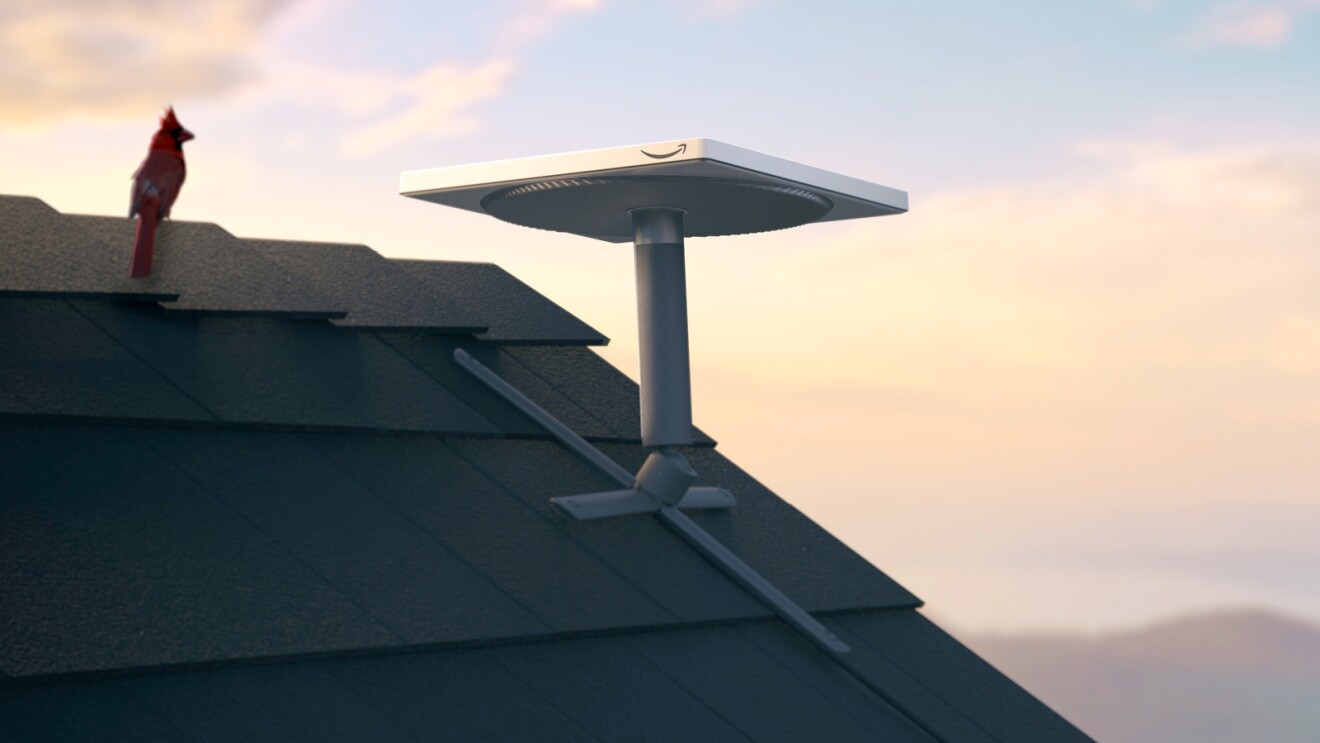Here are 15 photos and one video from Project Kuiper’s first full-scale mission into space, including pre-launch, launch, and initial post-launch phases of the mission.
On April 28, United Launch Alliance (ULA) launched the first 27 Kuiper satellites into space, marking the start of a full-scale deployment of our low Earth orbit satellite network. The ULA Atlas V rocket lifted off at 7:01 p.m. EDT from Space Launch Complex-41 at Cape Canaveral Space Force Station, Florida, and completed releasing all 27 satellites into space 36 minutes later at an altitude of 280 miles (450 kilometers) above Earth. Our team in mission control established contact with all 27 satellites within 90 minutes of launch, and we’ve continued to have a nominal start to the mission with all systems and subsystems onboard operating as planned.
Preparing for launch
In the weeks leading up to the mission, ULA assembled the rocket at its Vertical Integration Facility at Cape Canaveral. This process began with bringing in the main booster that powers the rocket.
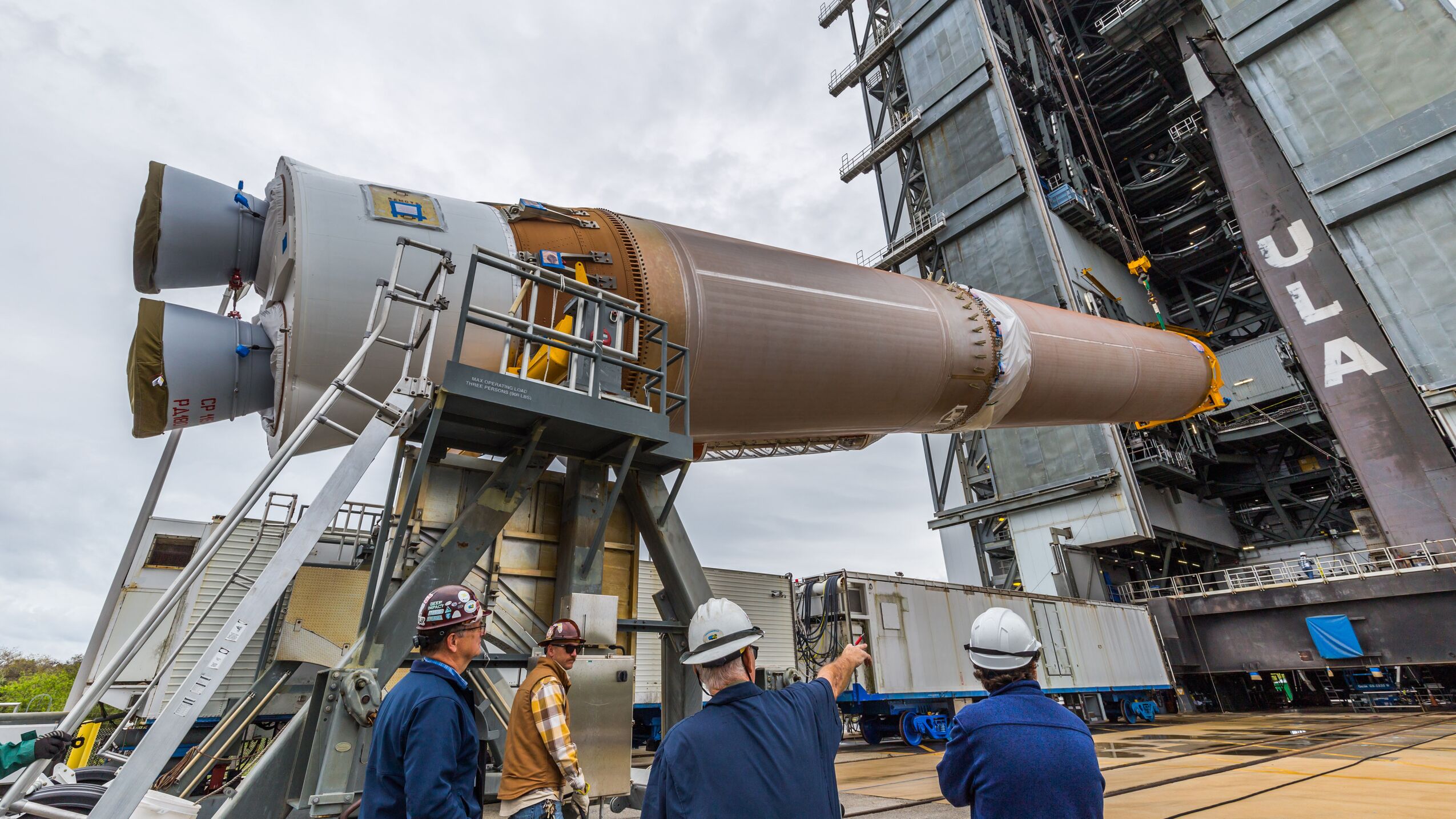
In the meantime, we were readying the Project Kuiper satellites for the ride to space at our dedicated satellite processing facility at Kennedy Space Center, adjacent to Cape Canaveral. This process involved encapsulating the satellites—stacked in three tiers of nine satellites each—inside the rocket fairing. The fairing protects the satellites during launch until they’re ready to be released into space.
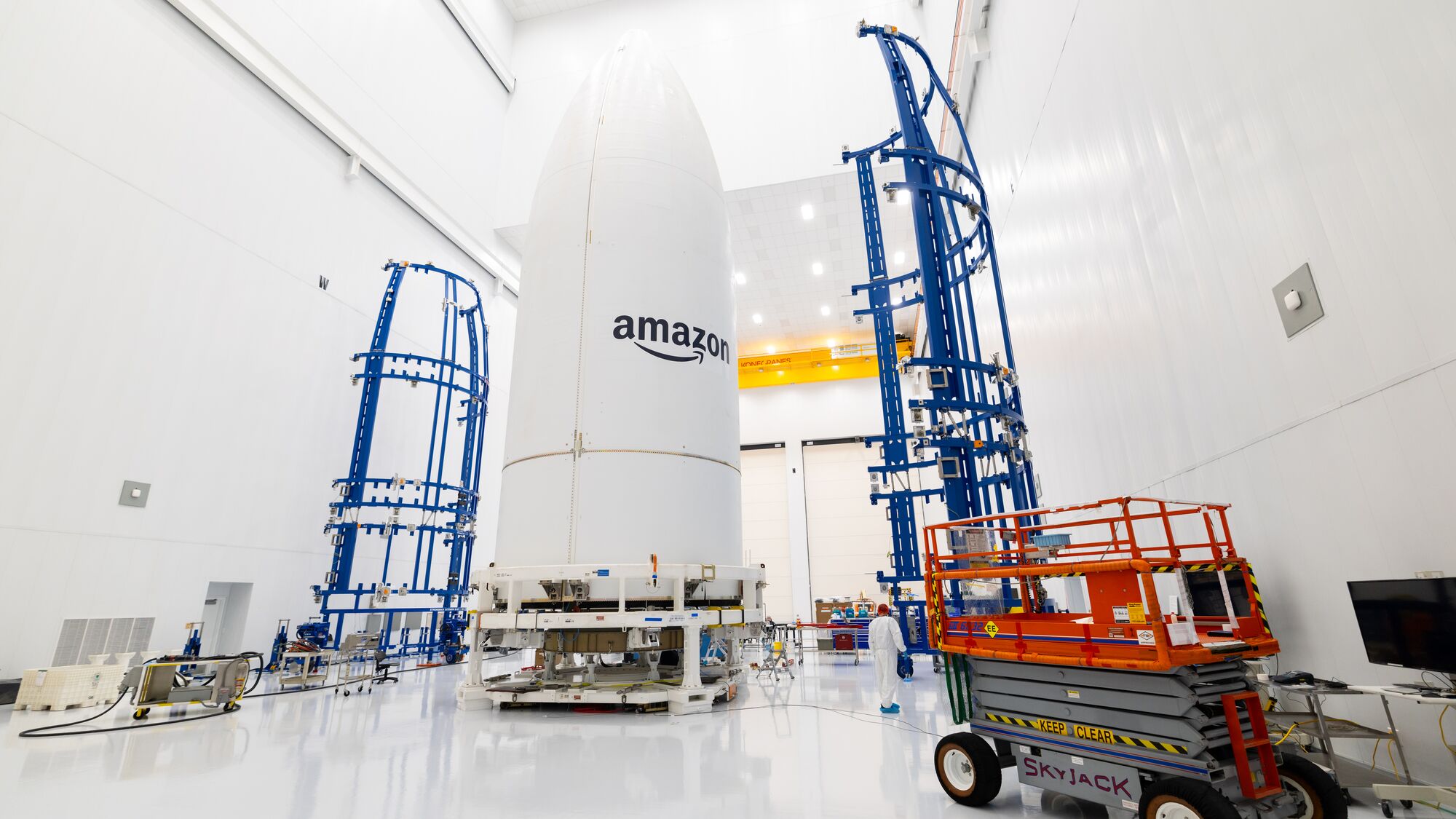
At the end of that process, we opened the doors of our satellite processing facility and ULA began the slow process of transporting the sealed fairing several miles down the road to its Vertical Integration Facility where they then hoisted the fairing into place and integrated it on top of the rocket.

Three days ahead of launch, ULA rolled the rocket to the launch pad to complete preparations. On the day of launch, ULA fueled the rocket and put it through final checkouts to ensure it was safe for flight. Our team also ran through a pre-launch review to confirm that our satellites were still healthy and ready for launch.
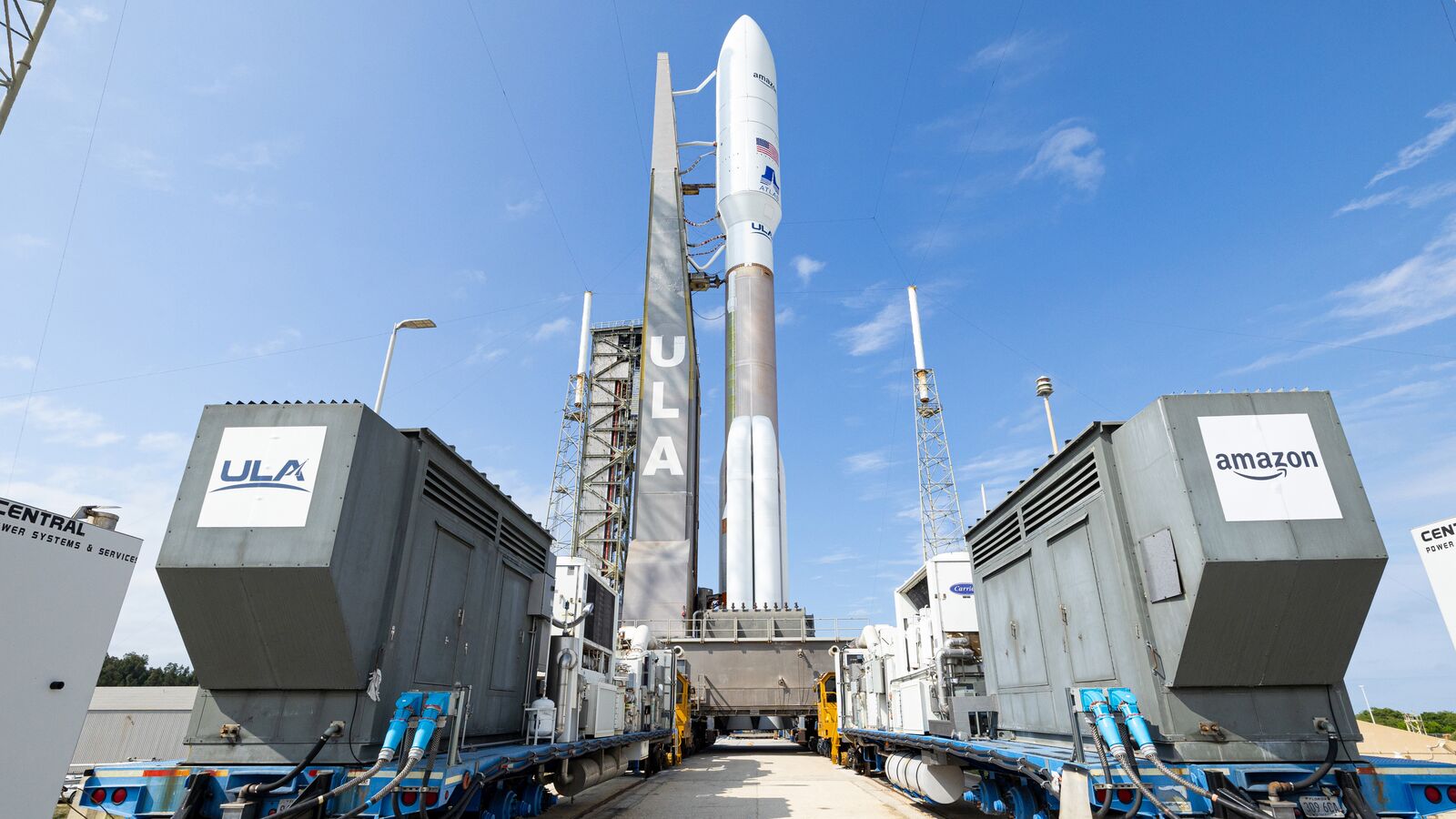
Liftoff for the KA-01 mission
At 7:01 p.m. EDT, ULA’s Launch Control Center gave the all-clear for launch, and the Atlas V rocket fired up its engines and lifted off from the launch pad.
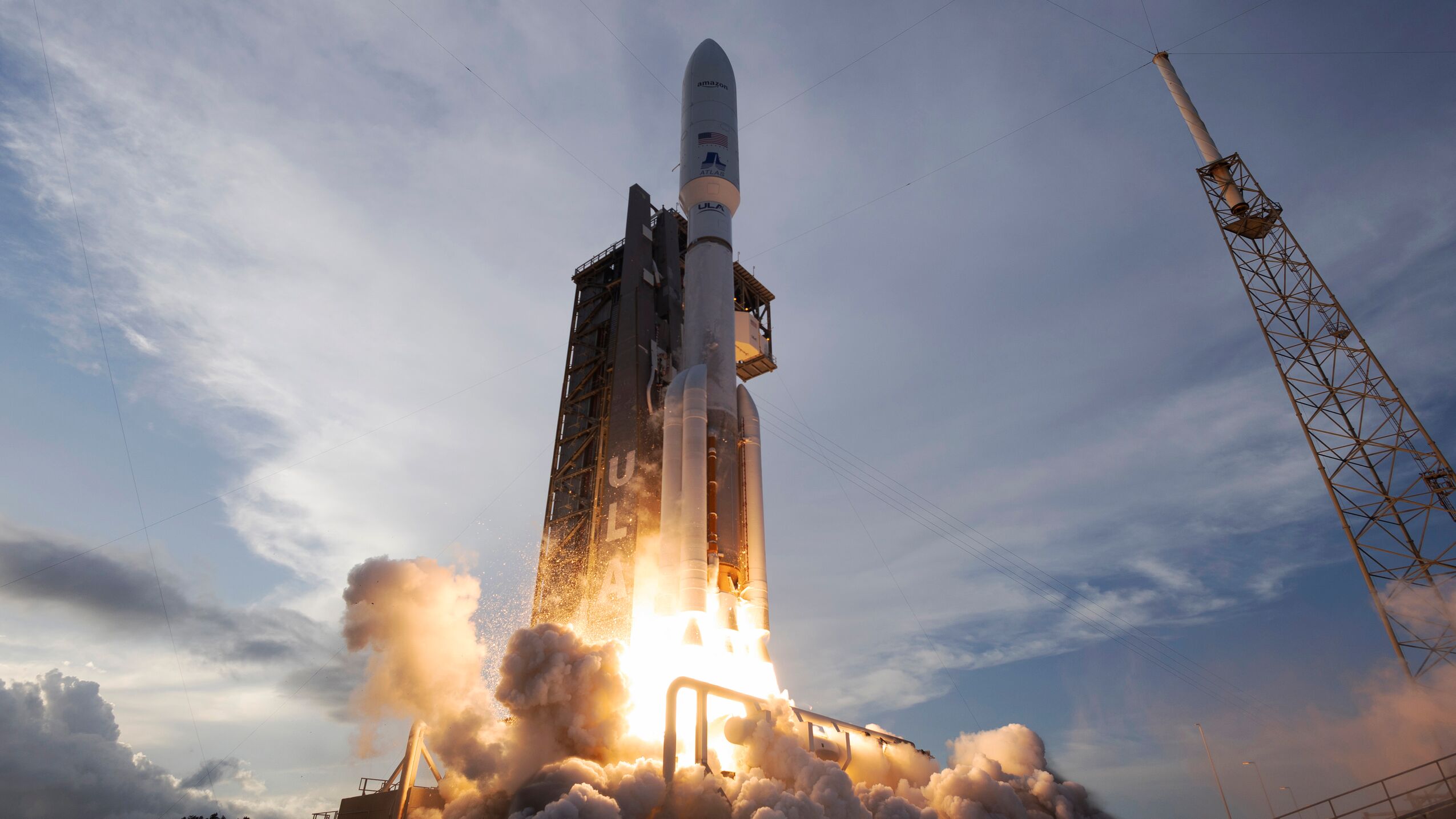
Our 27 satellites comprised the heaviest payload ever flown on an Atlas V rocket. Getting them to the correct orbit meant ULA needed to use its most powerful configuration of the rocket, with five solid rocket boosters attached. The boosters provided extra power during the first few minutes of launch.

Within seconds, the rocket cleared the pad and was on its way to space.

Nearby, Amazon employees and guests watched the launch at a safe distance from the roof of ULA’s Advanced Space Operations Center. Over the first several minutes of the launch, people throughout the eastern United States could briefly spot the rocket as it followed a path over the Atlantic Ocean along the East Coast.

For Kuiper employees, launch was an opportunity to see the results of their work first-hand.

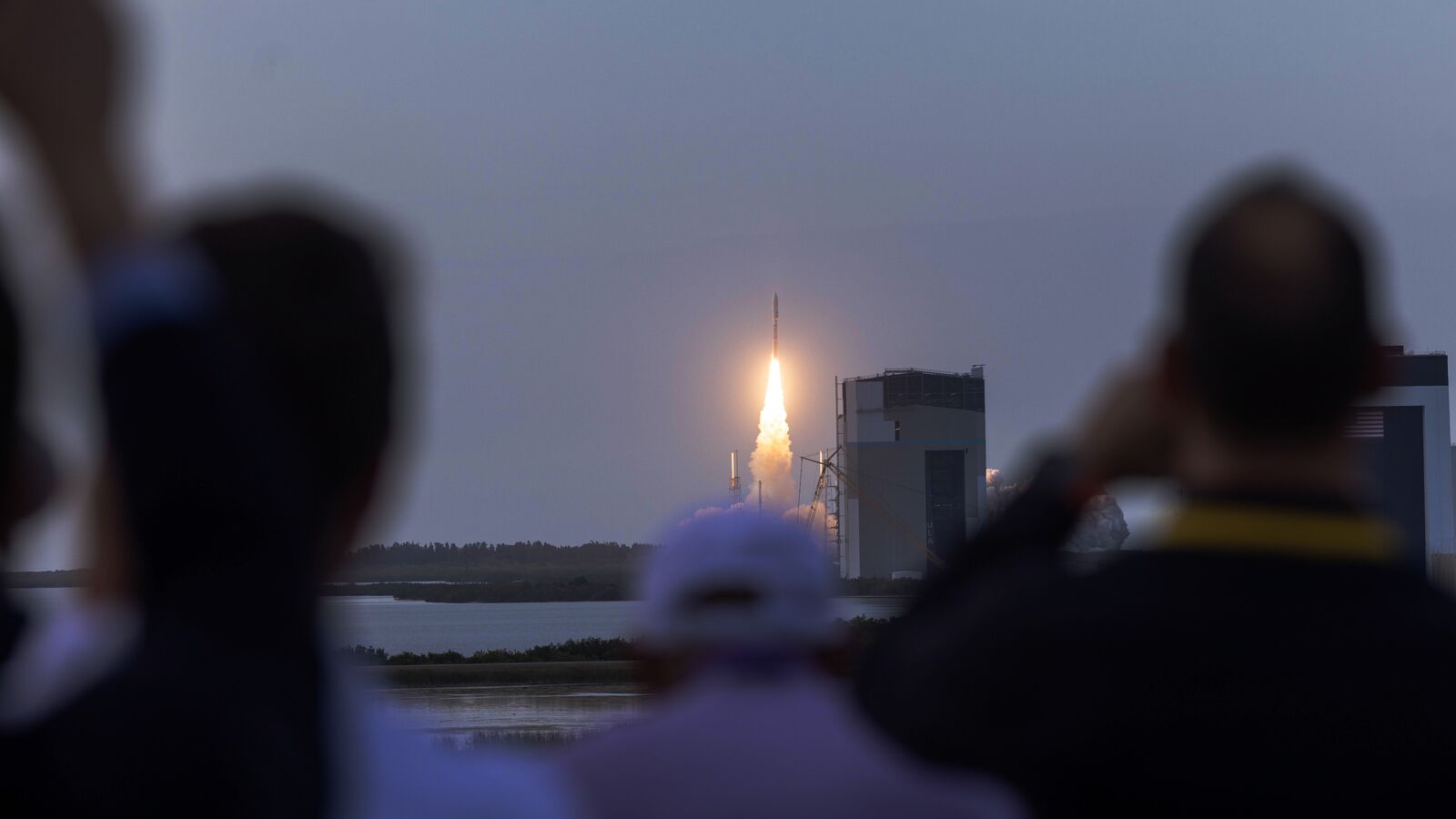
Activating the satellites in space
Once ULA completed dispensing the satellites into orbit, our team of flight controllers took over the mission from our Mission Operations Center in Redmond, Washington.
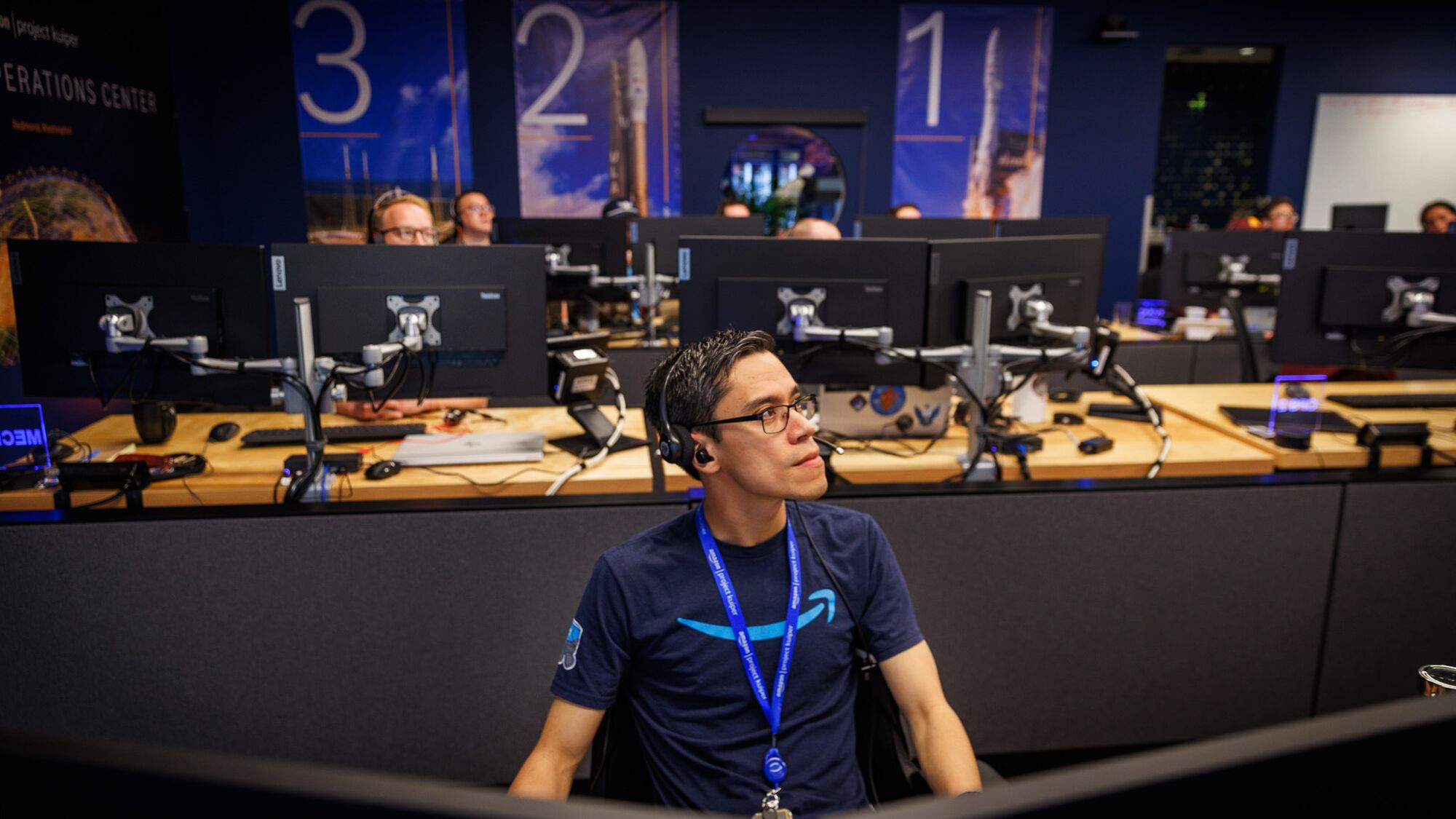
Their first job was to guide the satellites through their initial activation and health check processes. The first hours of the mission were some of the most critical as the satellites needed to safely separate from the rocket, boot up, make contact with our mission operations center, stabilize their movements, begin generating solar energy to recharge their batteries, test their onboard propulsion systems, and run diagnostics.

Around the world, Kuiper employees gathered to celebrate and support the mission.

It was an emotional moment in the Mission Operations Center when our last satellites separated from the rocket and we kicked off the next phase of the mission.

The KA-01 launch was the first of more than 80 launches Project Kuiper has secured to deploy our initial satellite constellation, and we’re already processing satellites for our next mission, KA-02. If you’re interested in joining the Kuiper team and supporting our mission to bring fast, reliable broadband to customers and communities around the world, explore our open roles. To learn more about Project Kuiper, visit https://projectkuiper.amazon.com.
Photos of rocket stacking and launch are courtesy of United Launch Alliance.
Trending news and stories
- Everything you need to know about the plot of ‘The Summer I Turned Pretty’ before Season 3
- Blink buying guide: Find out which smart doorbell or camera is best for you
- CEO Andy Jassy shares 2 ways Amazon is transforming health care—and says there is ‘so much more’ coming
- CEO Andy Jassy says he’s ‘very bullish’ on Amazon’s grocery business



